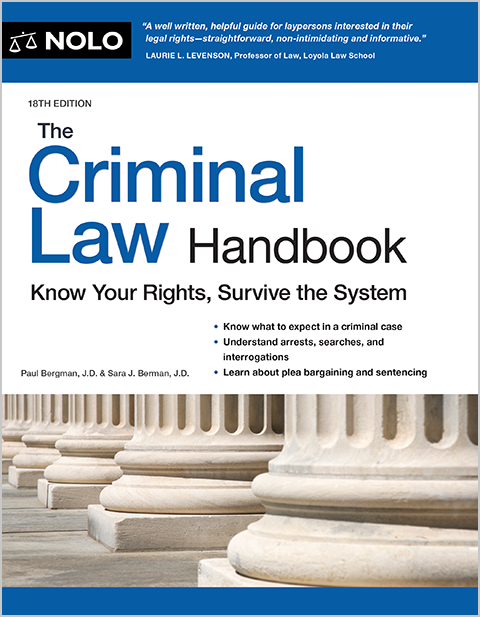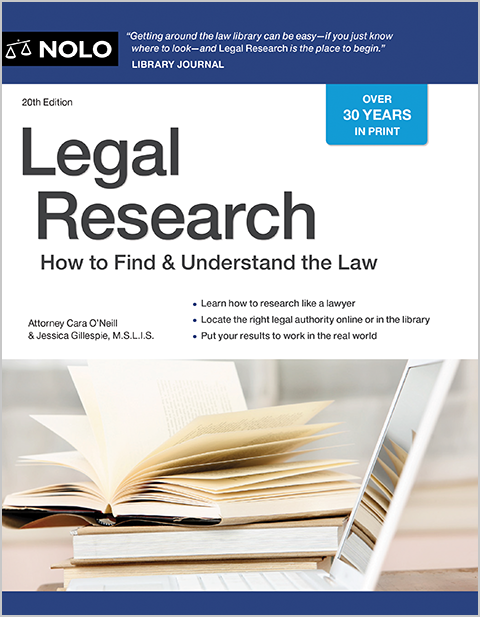Learn when the government can peak into your private property.
The Fourth Amendment protects your home and surrounding property from unreasonable police searches. But what constitutes "unreasonable" in the eyes of the law can differ from that of the property owner. The law might not even consider police looking into someone's backyard to be a "search." In this article, we'll review to what extent police can typically snoop around your property and when exceptions might apply.
Can Police Enter Private Property Without a Warrant?
If private property is someone's home, police can't typically enter without a search warrant (unless a warrant exception exists).
The Fourth Amendment protects one's home from warrantless searches (in most instances). A person's "home" extends to its "curtilage," which is the area immediately surrounding one's home that is worthy of privacy protection. A front porch, backyard, attached garage, and back patio are examples of what typically falls under the definition of "curtilage."
This protection has its limits, though. Generally speaking, police can go where the public is implicitly invited to go on your property. So, if anyone from the general public can walk up a sidewalk or driveway leading to someone's front door and knock, police can too. It's common—and legal—for police to walk up to someone's door, knock, and ask questions (also known as a "knock and talk").
Police who are in these "public" areas don't need to shield their eyes or plug their noses to their surroundings. If they walk up to a front door and the curtains are wide open, whatever they see inside is rightfully within their plain view. If they see drugs on the table, they could go to a judge and ask for a warrant to seize those drugs.
Can Police Enter or Search Your Backyard Without Permission?
The part of your backyard that immediately surrounds your home generally counts as curtilage, and police can't generally enter your backyard without a warrant, permission, or another valid exception.
Open fields. Now, if your "backyard" is a 100-acre ranch, the entire 100 acres won't be off limits to police. Open fields and outbuildings that aren't close to the house or used for domestic purposes don't receive Fourth Amendment protections. There's no bright line that defines where curtilage stops and open fields begin. Courts make these calls on a case-by-case basis.
Plain view. Police can also view any area of your backyard that the general public can view. So, even if police can't enter the backyard, they can still legally view what's back there from the street or sidewalk. For instance, a patrol person driving past your house who sees illegal marijuana plants growing on the back stoop can go ask a judge for a warrant. Even a fence won't necessarily keep police from seeing what's going on. Gaps in a fence (intentional or unintentional) can give police easy and legal access to look beyond (assuming the police haven't trespassed to get up to the fence).
Do Police Need to Respect "No Trespassing" Signs?
Not necessarily. Marking an area as off-limits is just one factor that courts consider in determining whether a person has a reasonable expectation of privacy in an area.
For instance, posting a "No Trespass" sign on a ranch-style fence surrounding an open field doesn't magically give that open field Fourth Amendment protections. Neither does posting such a sign on a chain-link fence where everything beyond the fence is viewable. Courts would be more likely to view such signs as creating an expectation of privacy if placed on a seven-foot tall privacy fence that completely blocks the general public's view.
What Exceptions Allow Police to Go Onto My Property Without a Warrant?
The Supreme Court recognizes several "exceptions" to the search warrant requirement. If the exception is legally valid, police can enter and search without a warrant.
Consent is probably the biggest exception. If police knock on someone's door and the owner allows the police to enter, police don't need a warrant to see whatever's in plain view. Other common exceptions include chasing after felons in hot pursuit, preventing imminent destruction of evidence, or providing emergency assistance to protect someone.
Examples of Backyard Searches
Below are two examples of backyard searches—one where police properly conducted a knock and talk and one where police went too far. When police go too far, the court may find their search unconstitutional and toss out any evidence found during the unconstitutional search.
Reasonable Expectation of Privacy
Police arrive after midnight at the defendant's residence. They see two "no trespassing" signs, one posted on the door to the residence and the other posted on a shed. Instead of walking up to the front door to do a "knock and talk," the police decide to go around back. No fences or gates blocked access to the backyard, but it was enclosed by trees on three sides and the house on the fourth side. Police find evidence of meth manufacturing. The defendant says the search violated the Fourth Amendment. The court agreed.
The State argued the police had the right to be in the defendant's backyard because no gates or objects blocked their entrance. But the court wasn't convinced. It decided the defendant had a privacy interest in his backyard. The officers arrived late at night when the home had no exterior lights on to welcome the public, the "no trespassing" signs asserted a privacy interest to the property as a whole, and the backyard wasn't visible from the street. These factors established an expectation of privacy.
(State v. Kruse, 306 S.W.3d 603, 611 (Mo. Ct. App. 2010).)
No Reasonable Expectation of Privacy
Acting on a tip, police went to a public alley behind a house and peered through gaps in a six-foot privacy fence. They could see marijuana growing in the backyard. They charged the property owner with unlawful cultivation of marijuana. The defendant asked the judge to toss out the evidence based on a violation of her Fourth Amendment rights. She argued her fence clearly showed she had established a reasonable expectation of privacy in her backyard and police were trespassing.
The court disagreed. They noted the defendant lived next to a public alleyway and did not take any precautions to board up gaps in the fence. Nor did she hang any signs indicating the unimproved area next to the fence was private property. Based on these factors, the court found the police could rightfully stand next to the fence and look in. The court also said her fence didn't give her a complete expectation of privacy because the property was located in an urban area with multi-story buildings nearby where any number of people could see down into her yard.
(People v. Wimer, 799 P.2d 436 (Colo. 1990).)
Getting Legal Help
Search-and-seizure law can be complex and often involves evaluating many factors, not just one. Take the above cases where the court found an expectation of privacy for an unfenced property, but no expectation of privacy when a defendant had a six-foot privacy fence.
Talk to a criminal defense attorney if you face criminal charges and believe a police search was unlawful. A lawyer can evaluate the totality of the circumstances and help you understand how the law is likely to apply in your case.

